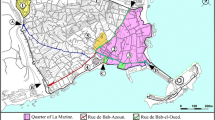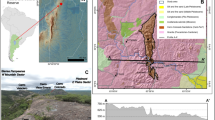Abstract
The Tyrrhenian coast near Rome, south of the mouth of the Tiber River, has been inhabited since prehistoric time, and the existence of villages in the area presently indicated as Castelporziano is documented since the fourth century BC. The environmental conditions of this area are described in the letters of Pliny the Younger (61-ca. 114 AD), who had a villa in the immediate vicinity or, perhaps, within the area that currently forms the Presidential Estate of Castelporziano. The Estate became the subject of intensive ecological investigations during the last decades. Many letters of Pliny the Younger tell on his villa, its gardens and orchards, the proximity of wintergreen rangelands for sheep, the beach and the fishing activity along the waterfront. Many plants are mentioned: the identification of some of them is discussed. As a general conclusion, the most significant traits described by Pliny are largely corresponding to the present. Recent archaeological investigations are providing new evidence of a relative climatic stability during the last two millennia, even if in the Middle Ages most villages were abandoned because of malaria and the forest expanded, whereas in the last century large areas were converted into rangelands, fields and reforestation with non-native species (pine and eucalypt plantations). The original Latin texts of Pliny, along with a modern translation, end up this paper.
Similar content being viewed by others
References
Caneva G, De Marco G, Dinelli A, Vinci M (1995) Le classi Parietarietea diffusae (Rivas Martinez 1964) Oberd. 1977 e Adiantetea Br-Bl. nelle aree archeologiche romane. Fitosociologia 29:165–179
Lanciani RA (1901) The Destruction of ancient Roma. Macmillan & Co., London
Lancisi GM (1714) Physiologicae animadversiones in Plinianam villam nuper in Laurentino detectam, in quibus tum de novis aggestionibus circa Ostia Tiberis, tum de ibidem succrescentibus arenarum tumulis, tum denique de herbis, et fruticibus in recens aggesto litore suborientibus disseritur. Giovanni Maria Lancisi
Lucchese F, Pignatti E (2009) La vegetazione nelle aree archeologiche di Roma e della Campagna Romana. Quad Bot Ambient Appl 26(2):3–89
Nibby A (1819) Viaggio antiquario ne’ dintorni di Roma
Pievano S, Longhi E (1901) Lettere scelte di C. Plinio Cecilio Secondo, Le Monnier, Firenze
Pignatti S, Ubrizsy Savoia A (1989) Early use of the succession concept by G M Lancisi in 1714. Vegetatio 84:113–115
Pignatti E, Giomi Visentin M (1989) Ostia Antica and its vegetation. Braun-Blanquetia 3(2):271–278
Pignatti E, Pignatti G (1993) Secondary succession in archaeological sites and recovering of evergreen vegetation. Bot. Congress, Abstract. Yokohama, XVth Internat
Pignatti E, Pignatti G (1995) Der Steineichenwald von Castelporziano. Sauteria 6:83–98
Pignatti E, Pignatti G, Tinelli A (1993) Secondary succession in archeological sites and recovering of evergreen vegetation. Annali di Bot (Roma) 51:43–51
www.gutenberg.org—EBook of Letters of Pliny by Gaius Plinius Caecilius Secundus. Translated by William Melmoth, revised by F. C. T. Bosanquet.The project Gutenberg 2013 produced by David Reed and David Widger—Project Gutenberg License included with this eBook or online
Author information
Authors and Affiliations
Corresponding author
Additional information
This peer-reviewed article is a result of the multidisciplinary project coordinated by the “Accademia Nazionale delle Scienze detta dei XL”, Rome, Italy, in the area of the Presidential Estate of Castelporziano near Rome.
Rights and permissions
About this article
Cite this article
Pignatti, E., Ubrizsy Savoia, A. & Pignatti, S. The landscape of Castelporziano at the time of the Roman Empire: a testimony by Plinius the Younger (second century AD). Rend. Fis. Acc. Lincei 26 (Suppl 3), 311–315 (2015). https://doi.org/10.1007/s12210-015-0390-9
Received:
Accepted:
Published:
Issue Date:
DOI: https://doi.org/10.1007/s12210-015-0390-9




